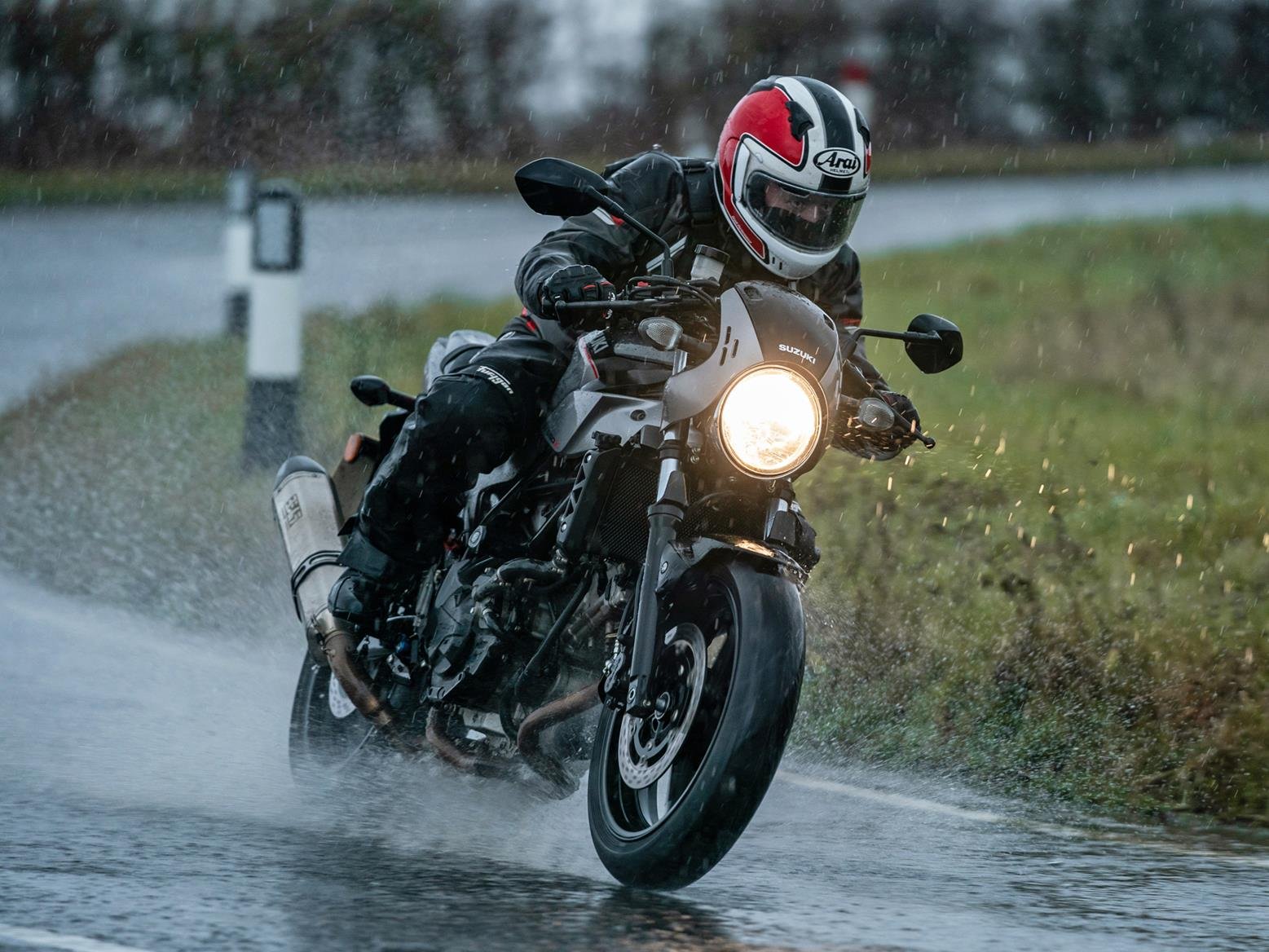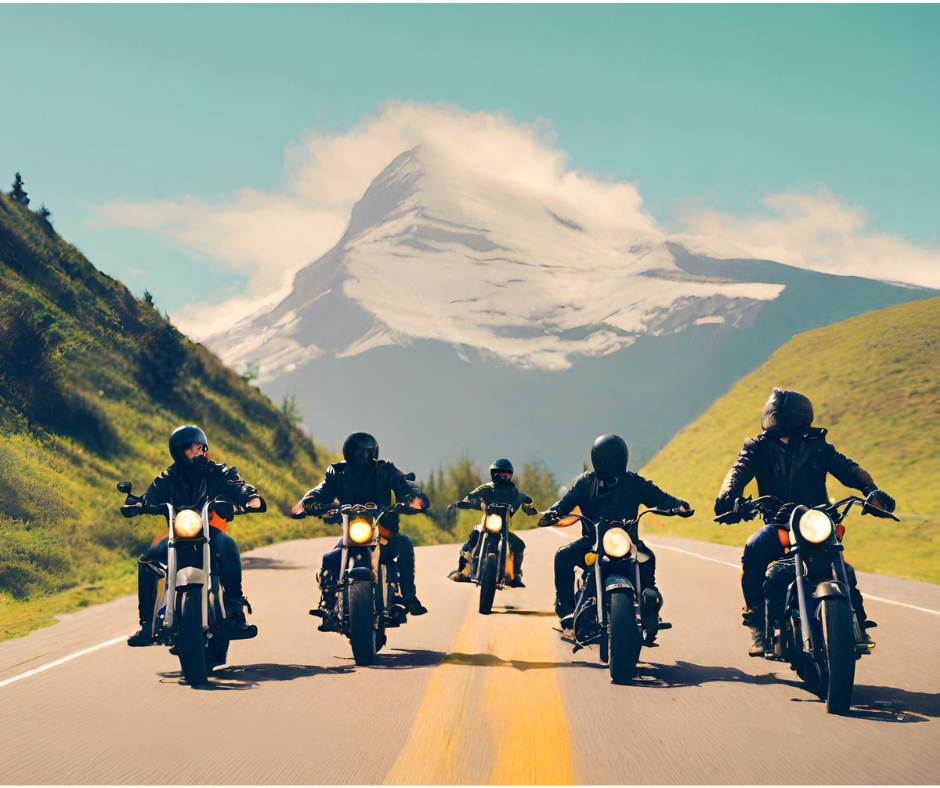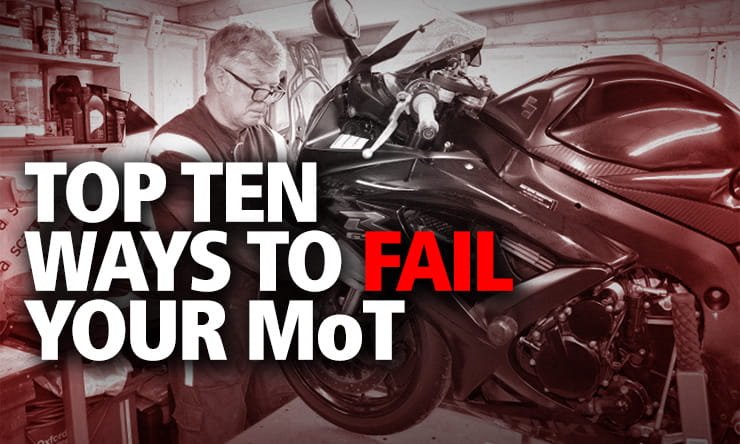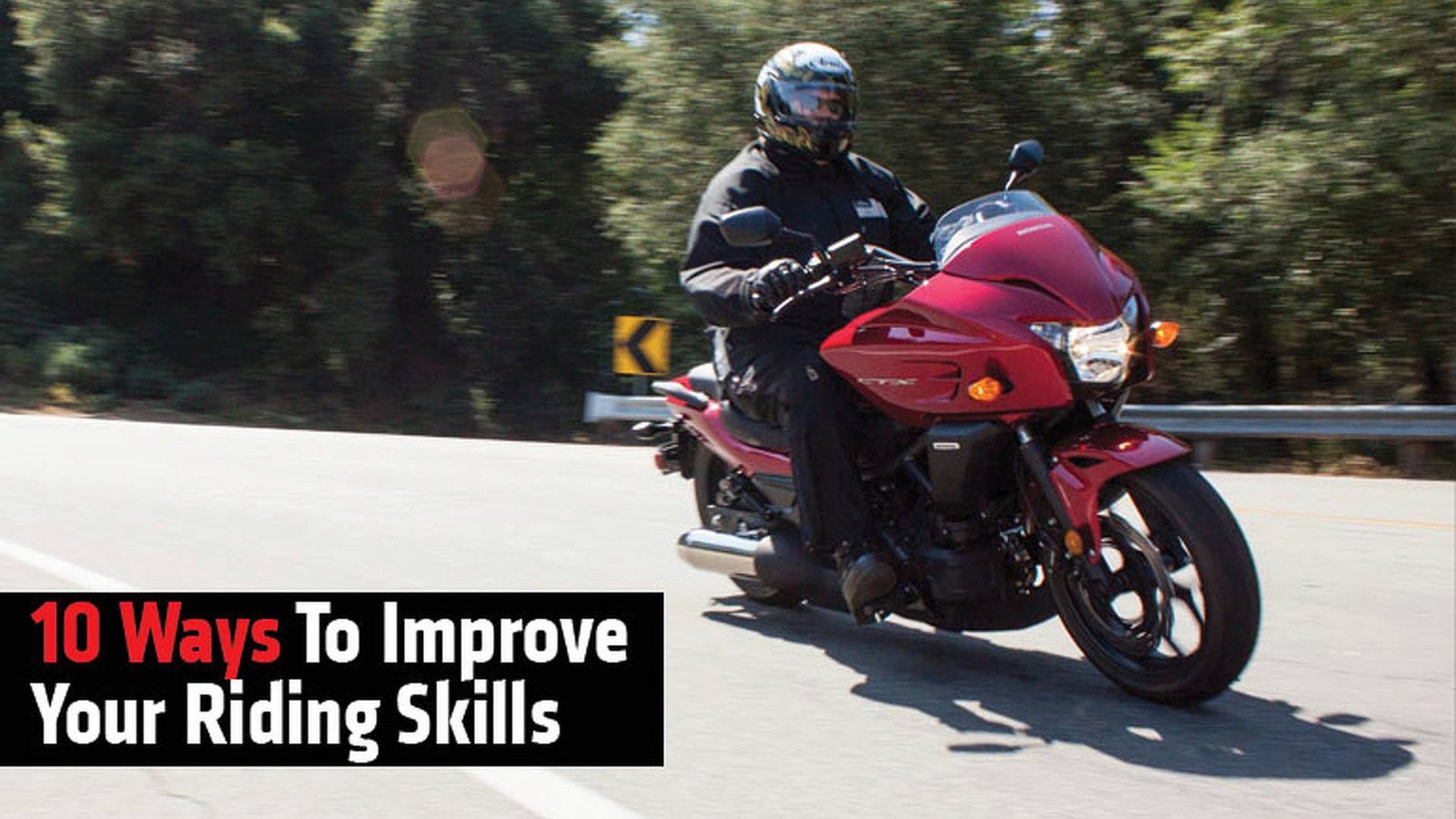Driving a motorcycle in the rain can be safe with proper precautions. Equip yourself with suitable gear and adjust riding techniques for wet conditions.
Rain presents new challenges for motorcyclists, demanding heightened awareness and adjustments in riding style to maintain safety. The likelihood of reduced visibility, decreased tire traction, and longer braking distances requires riders to exercise extra caution. Essential strategies for staying safe on wet roads include wearing water-resistant clothing and a helmet with a clear visor to ward off the elements.
Additionally, motorcyclists should ensure their bike is in good condition, with tires designed to disperse water effectively and lights that are fully functional for better visibility. Maneuvering at lower speeds, avoiding sudden movements, and maintaining a generous distance from other vehicles play a crucial role in safe wet weather riding. By following these precautions, motorcyclists can confidently navigate in the rain, keeping their journeys both enjoyable and secure.
Table of Contents
The Risks Of Wet Roads
The Risks of Wet Roads can significantly affect motorcycle riding experience. Understanding these risks helps ensure safety during rainy conditions. Key dangers include decreased visibility and traction, along with the threat of hydroplaning. Riders should approach wet roads with caution, using all available safety measures.
Decreased Visibility
The first major challenge in wet conditions is reduced visibility. Rain can obscure a rider’s view through their helmet visor.
- Beads of water scatter light, making it hard to see.
- Mist from other vehicles clouds vision further.
It’s crucial to wear a helmet with an anti-fog visor and keep headlights on to stay visible to others.
Reduced Traction
Next, water on the road means less grip for tires. Traction drops as roads get slick, leading to:
- Longer braking distances.
- Danger in curves and turns.
Choosing tires made for wet conditions and reducing speed can help maintain control.
Potential For Hydroplaning
Hydroplaning is a real risk on wet roads. It occurs when:
| Tire meets water: | Tire treads can’t displace water fast enough. |
|---|---|
| Losing contact: | The motorcycle glides on a water layer, losing road contact. |
Maintaining moderate speeds and using tires with deep treads can minimize this risk.
Preparation Is Key
Preparation is the cornerstone of motorcycle safety, especially when confronting rain. Proper gear, bike checks, and tire maintenance can make a significant difference. As you suit up for a wet ride, consider these critical safety measures.
Choosing The Right Gear
Staying dry and visible is crucial when riding in the rain. Essential gear includes:
- Waterproof jacket and pants: They should be breathable to prevent sweating.
- Riding boots and gloves: Look for waterproof material that offers a non-slip grip.
- Helmet with anti-fog visor: Clear vision is essential, so choose helmets with Pinlock or similar systems.
- Reflective vest: Bright colors or reflective materials ensure other drivers see you.
Performing Pre-ride Checks
Before setting out, conduct a thorough inspection of your motorcycle. Key checks include:
- Lights and signals: Confirm they’re operational to communicate with other drivers.
- Brake system: Check the responsiveness and pad thickness.
- Oil and fluid levels: Top up as necessary to ensure smooth engine performance.
- Chain or belt tension: Adjust if needed for optimal power transfer.
Tire Tread And Pressure Importance
Tires are your bike’s lifeline in wet conditions. Proper tread and pressure ensure grip and safety. Consider these tips:
| Check | Importance | Action |
|---|---|---|
| Tread depth | Prevents hydroplaning | Replace tires if below 2/32 of an inch |
| Pressure | Affects contact with the road | Adjust to manufacturer’s specifications |
Riding Techniques In The Rain
Riding a motorcycle in the rain requires skill and care. Wet roads pose unique challenges. Proper techniques can make rain riding safe and enjoyable. Below, key tips for mastering wet weather on two wheels.
Throttle Control
Gentle throttle motions are crucial in wet conditions. Sudden acceleration can cause slipping. Roll on the throttle smoothly. Maintain a steady pace for better traction.
- Maintain a consistent speed.
- Avoid abrupt throttle changes.
- Use lower gears to prevent wheel spin.
Braking Adjustments
Stopping distances increase when roads are wet. Brake early and softly. The front brake requires extra caution. Use it gradually to avoid skidding.
- Apply rear brake slightly before the front.
- Increase following distance behind other vehicles.
- Practice smooth brake application.
Cornering On Wet Surfaces
Approach turns with care on wet roads. Lean angles should be minimal. Your bike remains more upright, ensuring more tire contact with the road.
| Before the Turn | During the Turn | After the Turn |
|---|---|---|
| Slow down earlier than normal. | Keep your bike as upright as possible. | Gradually accelerate out of the turn. |
Visibility Matters
Visibility matters when riding a motorcycle in the rain. Raindrops scatter light, making it tough to see and be seen. So, staying visible is crucial. Below are ways riders can enhance visibility during wet conditions.
Wearing Reflective Equipment
Bright and reflective gear is a must-have for rainy rides. Reflective jackets, helmets, and decals bounce light, catching drivers’ attention. Here’s what works best:
- Reflective Jackets: Wear jackets with built-in reflectors.
- Helmets: Choose helmets with reflective stickers.
- Decals on Bike: Put reflective decals on your motorcycle.
Keeping Visors And Glasses Clear
A clear view is vital. Keep visors and glasses fog-free. Tips include:
- Anti-fog Visor: Apply anti-fog coating for clear sight.
- Pinning Rain Off: Use pin-lock visors to prevent droplets.
- Cleaning Regularly: Wipe visors and glasses with a microfiber cloth.
Using Lights Effectively
Lights play a key role in being seen. Besides headlamps, consider additional lights. Here’s how to use them:
| Light Type | How to Use |
|---|---|
| Headlamps | Keep them on, even during the day. |
| Brake Lights | Ensure they’re working properly. |
| Signal Lights | Use them well before turning. |
| Auxiliary Lights | Install to boost side visibility. |
Motorcycle Maintenance For Wet Weather
The right maintenance ensures motorcycles handle rainy roads with greater safety and confidence. Riders must stay vigilant with their bike’s condition, especially for wet weather performance.
Regular Servicing
Rain introduces water, dirt, and grime onto motorcycle components. These elements compromise performance and safety. Regular servicing stands as the first defense line against rain-related wear and tear. Ensure the engine operates smoothly in damp conditions. Have a mechanic inspect seals, bearings, and filters for water damage risks.
Brake And Light Checks
Effective braking is vital in wet conditions. Brake pads should have adequate material. They must be free from oil or dirt. Lights must also be in top-working condition. Visibility during rain can significantly decrease. Both head and tail lights must be bright and clear. Regular wiping of light cases helps maintain visibility. Keep spare bulbs in case of sudden failures.
Chain Lubrication And Care
The chain needs special attention before and after riding in the rain. Water strips away lubrication and promotes rust. Apply a suitable waterproof lubricant regularly. Dry the chain after wet rides before adding lubricant. This doubles the chain lifespan and maintains optimal performance.

Credit: www.progressive.com
Road Surface Challenges
Driving a motorcycle in the rain presents unique challenges, especially regarding the road surface. As weather conditions worsen, roads transform, affecting traction and visibility. Understanding these transformations is key to maintaining safety during wet rides.
Identifying Hazardous Spots
Rain can expose or create perilous areas on roads, essential for riders to recognize. Oil slicks typically found near the center of lanes, become extremely slippery. Avoiding these spots reduces the risk of skidding.
- First signs of rain: Often the most dangerous time as oils surface.
- Shiny patches: May indicate oil or diesel; best to steer clear.
- Standing water: Can cause hydroplaning; stay vigilant.
Maneuvering Through Puddles
Puddles present unpredictability. Riding through them requires cautious approach. Feeling out the road ahead with slow, controlled motions helps determine depth and potential hazards submerged within.
- Reduce Speed: Lower speeds offer better reaction time.
- Observe reflections: Indicates water depth and road integrity.
- Choose a path: Select the safest route around or through puddles.
Avoiding Paint Lines And Metal Surfaces
Wet paint lines and metal surfaces on roads, such as manhole covers or steel plates, are notably slick when wet. Extra caution is necessary when traversing these elements to prevent the motorcycle from losing grip.
| Surface Type | Action |
|---|---|
| Paint Lines | Cross at a perpendicular angle with minimal leaning. |
| Metal Surfaces | Avoid when possible, or cross with care without sudden moves. |
Psychological Aspects Of Rainy Rides
Driving a motorcycle in rain can be a tough challenge. It tests your skills and nerves. Understanding the psychological aspects of rainy rides is key to navigating wet roads safely.
Stress And Concentration
Riding in rain brings stress. The road gets slippery. Visibility drops. You must stay focused. Your mind should be sharp. Concentration is crucial.
- Plan your route to avoid high-stress areas.
- Take breaks to keep your mind fresh.
- Prioritize safety over speed.
Dealing With Anxiety
Anxiety can hit any rider. The sound of rain. The feel of wet gear. Stay calm. Breathing exercises help. So does positive self-talk.
- Breathe deeply, count to ten, release
- Tell yourself, “I can handle this.”
- Visualize a safe ride.
Gaining Experience In Wet Conditions
The more you ride in the rain, the better you get. Start with short trips. Practice makes perfect. Wet weather riding skills will grow.
| Experience Level | Tips |
|---|---|
| Beginner | Start in light rain. Practice in safe spaces. |
| Intermediate | Try heavier rain. Focus on bike control. |
| Advanced | Refine skills. Aim for longer rides. |
Remember, each rainy ride makes you stronger. Equip yourself with the right gear. Take your time. Soon, rain will not phase you.
When Not To Ride
Deciding ‘When Not to Ride’ a motorcycle in the rain is crucial for every rider’s safety. Conditions can swiftly go from safe to hazardous. Recognizing these scenarios can mean the difference between a pleasant journey and a perilous ordeal.
Extreme Weather Conditions
Riding in the rain requires caution. Certain weather conditions warrant staying off the road altogether:
- Heavy downpours reduce visibility and increase stopping distances.
- High winds can make maintaining control difficult, especially on lighter bikes.
- Lightning storms present serious risks, with motorcyclists being vulnerable on open roads.
- Hail can injure riders directly as well as create slippery surfaces.
Judging When To Pull Over
It’s important to know when to seek shelter. Here are signs:
- Water levels rise, covering road markings, this can lead to loss of traction.
- Vision impairs due to misted visors or heavy rain.
- Riding feels unstable, with your motorcycle swaying or skidding.
- Surrounding traffic slows down drastically, indicating poor driving conditions.
Alternative Transport Options
Consider other ways to travel when conditions turn treacherous:
| Option | Benefit |
|---|---|
| Public Transport | Safer in severe weather, avoids exposure. |
| Ridesharing | Offers door-to-door convenience. |
| Personal Vehicle | Enclosed, protects from the elements. |
Choosing the right mode ensures your safety and keeps you dry. Make the smart choice when clouds gather and roads slicken.
After The Rain
Puddles dissipate and the sky begins to clear, a cue for many motorcyclists that riding time is not over, yet post-rain challenges still linger. Tackling the roads after the rain can teach valuable lessons about safety and bike maintenance. Let’s delve into the important steps you need to take once the rain has stopped.
Post-ride Bike Maintenance
Just like drying off after a shower, your motorcycle needs care to prevent rust and damage. Meticulous maintenance post-ride prolongs your bike’s health.
- Check your brakes: Moisture and debris can affect their function.
- Inspect your tires: Look for wear and ensure they’re not slippery.
- Clean the surfaces: Wipe down your bike to avoid watermarks and corrosion.
- Lubricate the chain: Rain can strip the lube, so reapply it to avoid damage.
- Check the lights: Ensure all are working for safe night rides.
Evaluating Your Experience
Reflect on your rainy ride to enhance future performance. Did certain puddles make you skid? Were your reactions quick? Make a mental or physical note of these to boost confidence for next time.
| Situation | Reaction | Note for Improvement |
|---|---|---|
| Sudden Puddle | Skid Slightly | Approach at Reduced Speed |
| Heavy Traffic | Maintained Distance | Stay Visible and Alert |
Improving Skills For Future Rides
Each rainy voyage is a lesson. Practice makes perfect. Here are ways to sharpen riding skills:
- Enroll in a wet-weather riding course.
- Practice in safe, controlled environments after rainfalls.
- Join forums or communities to share experiences and tips.
- Invest in quality rain gear and tires designed for wet conditions.

Credit: www.bertsmegamall.com

Credit: m.youtube.com
Frequently Asked Questions On Is It Safe To Drive Motorcycle In The Rain
Can You Ride A Motorcycle Safely In Wet Conditions?
Riding a motorcycle in the rain is possible with precautions. Ensure you have suitable gear, maintain a moderate speed, and allow more distance for braking. Road visibility and traction are reduced in rain, so careful riding is essential for safety.
What Precautions Should Motorcyclists Take When It Rains?
Motorcyclists should wear waterproof clothing and a helmet with an anti-fog visor. Tires should be checked for proper tread. Additionally, riding lines must be adjusted to avoid puddles and painted surfaces, and speed should be reduced to improve reaction times.
How Does Rain Affect Motorcycle Braking Distance?
Rain increases a motorcycle’s braking distance due to reduced friction. Wet roads make tires grip less effectively, lengthening the necessary stopping distance. Riders should begin braking earlier and apply brakes smoothly to prevent skidding, ensuring a safer ride in wet conditions.
Are There Special Tires For Motorcycles For Rainy Weather?
Yes, there are motorcycle tires designed specifically for wet weather. These tires have deeper treads and unique rubber compounds to provide better water dispersion and grip. It’s advisable to choose tires suited for the climate and expected weather conditions.
Bottom Line
Navigating wet roads on a motorcycle can be daunting, but with the right precautions, it’s manageable. Adequate gear, reduced speed, and heightened awareness are your best allies against the rain. Always remember, safety is paramount. By respecting the weather and your limits, the journey can continue, rain or shine.
Stay vigilant and ride responsibly.




Leave a Reply